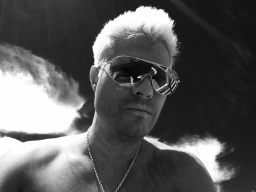We crossed the border into Canada through the Piegan Border Crossing outside of Glacier National Park in Montana, which has limited hours from 7:00 am-11:00 pm. We passed through Calgary before spending the night in Canmore at the Quality Resort. All the rooms and suites have fireplaces and kitchenettes. Some of the lofts are two-story with a bedroom upstairs.
The view from our lofts on the back of the hotel overlooked the train with mountains in the background. The bright blue sky, morning sun and and low hanging clouds combined for an even more spectacular nature show to wake up to. Several in our party enjoyed breakfast at the hotel restaurant, Chez Francois.
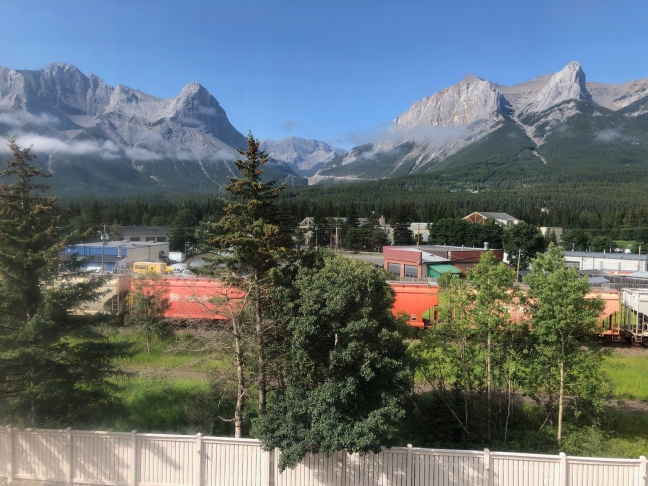
Canmore is a charming town in Alberta’s Rocky Mountains, west of Calgary. It’s known for craggy summits like the Three Sisters and Ha Ling Peak. A friend I met on a Scandinavian cruise a few years ago who lives in Calgary said Canmore is her favorite spot in the region.
We enjoyed a late night supper on our first night in Canmore at the Iron Goat Pub & Grill. They feature wild game burgers and steaks, beef burgers and steaks, salads, pizzas, seafood, and other nightly specials like rack of lamb.
The outdoor patio offers stunning mountain views. Our friendly waitress from Australia said she came to the area to snowboard in the mountains for a winter and fell in love. She’s now been in the area for two years and the restaurant is sponsoring her to obtain a visa.
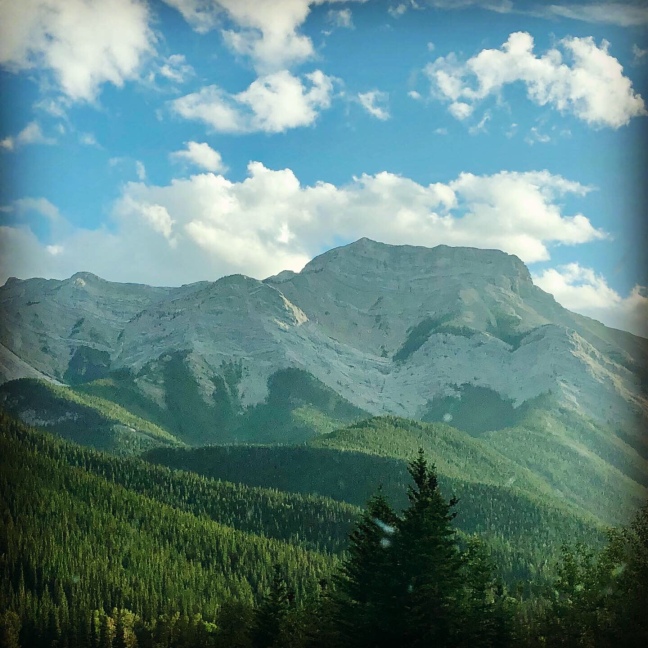




The region is breathtakingly beautiful but personally I would not want to brave the winters. For those who enjoy outdoor winter activities, though, it’s haven on earth with bountiful options.
The next day, we continued on to Banff, a resort town in the province of Alberta, located within Banff National Park. The peaks of Mt. Rundle and Mt. Cascade, part of the Rocky Mountains, dominate its skyline.
On Banff Avenue, the main thoroughfare, boutiques and restaurants mix with château-style hotels and souvenir shops. I even got my Starbucks fix which I prefer over the local favorite, Tim Horton’s. Others in our group shopped for souvenirs. Sam scored some shirts from the Banff Harley Davidson store. We all loved Banff with its charming Swiss and French influences.








The surrounding 1.6 million acres of parkland are ostensibly home to large and varied amounts of wildlife including caribou, elk and grizzly bears. The overall absence of animals on our day-long drive, though, was extremely disappointing. We only saw two deer near the park entrance but we were extremely ecstatic to finally see one enormous grizzly bear eating foliage along the road just outside of Jasper and a lone black bear in Banff National Park on our way back to Canmore. Sam impressed us by spotting the bear while also driving through the mountains in the rain.

 The Canadian Rockies mountain range spans the provinces of British Columbia and Alberta. With jagged, ice-capped peaks, including towering Mt. Robson, it’s a region of alpine lakes, diverse wildlife and outdoor recreation sites. National parks in Alberta are Jasper, with the famously accessible Athabasca Glacier, and Banff, site of glacier-fed Lake Louise, which was the next, and arguably the most impressive, place we visited within Banff National Park, and perhaps anywhere on our entire trip.
The Canadian Rockies mountain range spans the provinces of British Columbia and Alberta. With jagged, ice-capped peaks, including towering Mt. Robson, it’s a region of alpine lakes, diverse wildlife and outdoor recreation sites. National parks in Alberta are Jasper, with the famously accessible Athabasca Glacier, and Banff, site of glacier-fed Lake Louise, which was the next, and arguably the most impressive, place we visited within Banff National Park, and perhaps anywhere on our entire trip.
Lake Louise is a hamlet in Banff National Park in the Canadian Rockies, known for its turquoise, glacier-fed lake ringed by high peaks and overlooked by the stately Chateau Lake Louise, a Fairmont hotel with rates starting at $740 a night. The hotel has spectacular gardens at the water’s edge.
Hiking trails wind up to the Lake Agnes Tea House for bird’s-eye views. There’s a canoe dock in summer, and a skating rink on the frozen lake in winter. There are horseback riding and wildlife tour opportunities in the area.
The Lake Louise Ski Resort features a wildlife interpretive center at the top of a gondola. The elevation is 5,249 feet.






From Lake Louise we drove to Jasper which takes about three hours depending on photo stops. Gas up your vehicle and take along plenty of snacks as there are very few rest areas for washrooms or refreshments.
We passed Bow Lake, Crowfoot Glacier, and Columbian Icefields while driving through Banff and Jasper National Parks. For the brave adventurer, there is the glacial skywalk—a half moon glass walkway hanging off the side of the mountain overlooking a deep valley.




After driving through the Rockies, we arrived in Jasper, an alpine town in Canada’s Alberta province, which is the commercial center of Jasper National Park. Amid the snow-capped Canadian Rockies, the park has glacier-fed lakes, forests and rivers. The Jasper SkyTram climbs to the summit of Whistlers Mountain, with views of downtown.
If you want to stay in Jasper, be sure to make reservations for accommodations well in advance as the hotels and inns fill up, especially when the train is in town. We topped off the van with gas and filled our own tanks with fast food before the four-hour return drive to Canmore. Despite the long day in the vehicle, the natural surroundings were an outstanding demonstration of God’s handiwork.


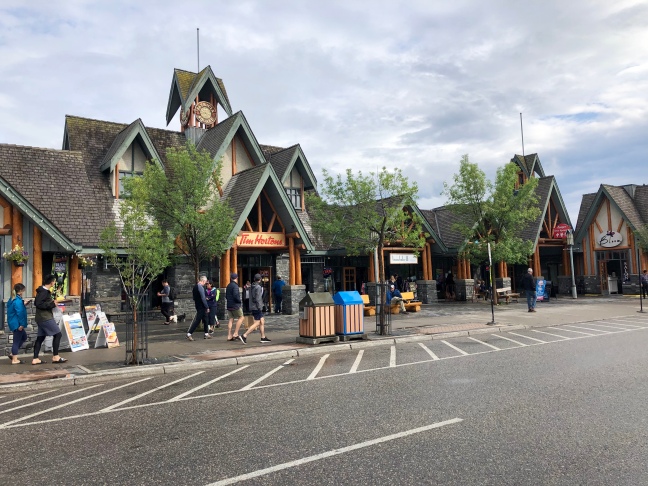

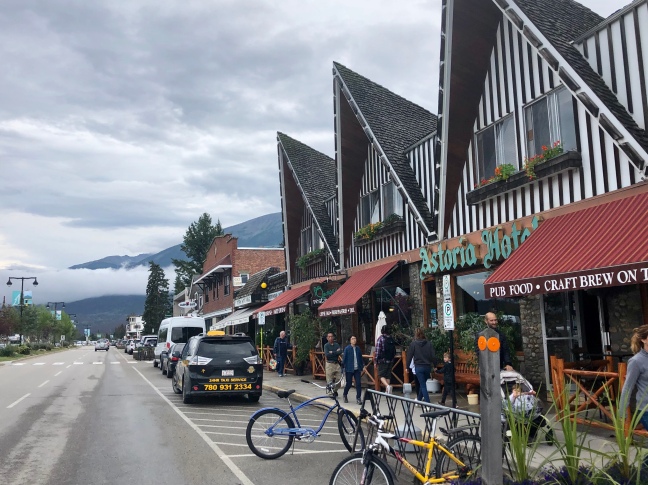

 After leaving Canmore the next morning, we headed back to Kalispell, Montana where we had left the Yoder’s private tour bus at the campground. Our route back took us through Kootenay National Park in British Colombia. Break-neck views enchanted us at every curve in the road, from jagged mountain tops to Marble Canyon and from wildflowers and trees to countless rivers and streams with crystal-clear, blue waters.
After leaving Canmore the next morning, we headed back to Kalispell, Montana where we had left the Yoder’s private tour bus at the campground. Our route back took us through Kootenay National Park in British Colombia. Break-neck views enchanted us at every curve in the road, from jagged mountain tops to Marble Canyon and from wildflowers and trees to countless rivers and streams with crystal-clear, blue waters.









We rounded out our visit to the Canadian Rockies with a delicious lunch at the Horse Thief Creek Pub in the small town of Radium Hot Springs. We also enjoyed a picturesque drive through the beautiful little town of Invemere on the Lake.
Everywhere you look is a picture postcard. To understand the natural forces involved in the creation of the Canadian Rockies, put a piece of notebook paper flat on a table. Put your hands on the opposite two ends. Slide your hands toward each other, and the paper will lift right up between your hands. This is how the Rockies were formed, except in place of paper was huge rocky plates, and instead of hands were huge forces caused by the rocks deep, deep down moving towards the west and running into other huge rocky plates. When the earth’s plates moved most of them crashed and they started to go up. The result is a breathing region on planet earth that ought to be on your bucket list if it isn’t already.

